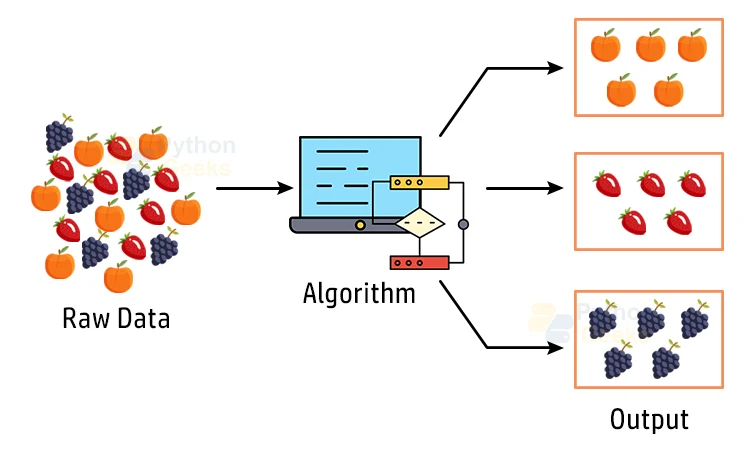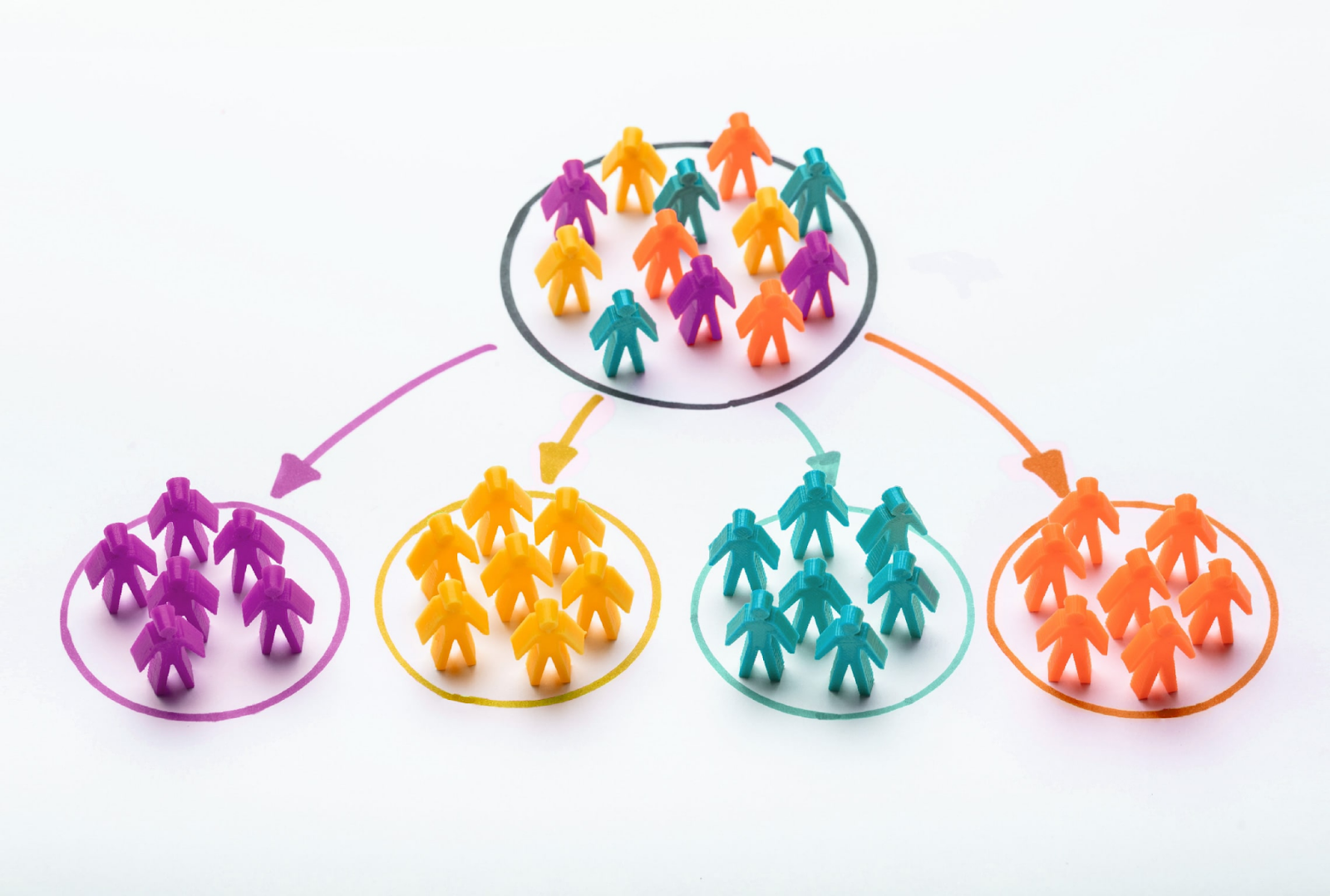How to Nail your next Technical Interview











You may be missing out on a 66.5% salary hike*













Interview Kickstart has enabled over 3500 engineers to uplevel.
Segmentation and clustering are essential tools in understanding and predicting consumer behavior. While both serve the purpose of categorizing data, confusion persists regarding their distinctions and the impact they have on marketing strategies.
Clustering and segmentation share the common goal of categorizing individuals based on similarities. In the world of digital experiences, they play crucial roles in predictive marketing. The key difference between clustering and segmentation lies in their approach: clustering relies on machine learning, while segmentation is driven by human input. This contrast often leads some individuals to avoid clustering, preferring to rely on their own understanding of customers.
The hesitation arises from the classic debate of human intuition versus machine-driven processes. However, rather than viewing segmentation as the human approach and clustering as the machine-based method for grouping data, combining these tactics can be highly effective. This translates to improved financial outcomes, enhanced customer experiences, and smarter business practices.
Here’s what we’ll cover in this article:
Cluster analysis, also known as clustering, involves organizing a collection of objects in a manner where items within the same group share more similarities among themselves than with those in different groups. These distinct groupings are referred to as clusters, and the measurement of similarity among objects can be established through various methods.

Source: Python Geeks
It's an unsupervised learning technique aiming to uncover inherent data structures without relying on predefined labels. This process can be seen as exploratory, revealing hidden patterns or structures within the data that are of interest.
Clustering finds widespread use in industrial applications such as customer segmentation. Due to its numerous business applications, mastering customer segmentation is a crucial skill for data scientists and analysts.
Machine learning serves as a powerful tool for handling vast datasets efficiently. Clustering becomes invaluable when dealing with datasets of such magnitude that even a team of human data scientists would struggle to analyze them within a reasonable timeframe.
Additionally, leveraging clustering is advantageous because, despite our reluctance, humans are prone to errors, while machines might identify insights that elude human observation in a dataset. This capability enables the targeting of clusters throughout the entire customer database, facilitating higher-level and faster personalization than achievable through human efforts.
Consider a straightforward illustration showcasing how machine learning clustering algorithms identify similar groups within a vast dataset. In this scenario, the data demonstrates an inverse relationship: as customers purchase more frequently, their spending decreases. Conversely, a longer buying cycle correlates with higher spending.
This comparison is based on Days Between Purchases versus Average Order Size. For instance, among "stock-up" buyers, a pattern emerges—less frequent purchases but with substantially higher monetary value. It's important to note that machine learning clustering algorithms analyze dozens, or even hundreds, of data points in a multivariate manner to pinpoint customer clusters exhibiting similar behaviors. Such a scale of analysis is beyond the capability of humans to execute effectively.
The crux lies in the fact that machine learning drives clustering, uncovering similarities without direct input from marketers. Marketers, instead, determine the subsequent actions post the initial work done by ML algorithms.
For instance, a cluster of buyers exhibiting a delay of over 60 days before making a second purchase has been identified. Leveraging this data, marketers can craft precise campaigns targeting this cluster. Recognizing the shared buying patterns among these "stock-up" buyers suggests the likelihood of similar behaviors for other products within this group. In response, a marketer might contemplate sending this cluster a discount code for vitamins or supplements, even if those products are not part of their usual purchases.
Segmentation occurs when a marketer selects specific criteria from a vast dataset to isolate particular groups. Essentially, it involves examining customer data and handpicking specific parameters to target a particular group.

Source: Nutshell CRM
At this juncture, humans utilize their cognitive abilities and, oddly enough, their data-informed intuition to focus on particular groups and delve as deeply as they desire. While clustering offers insights, segmentation empowers marketers, enabling them to deliberately choose and target specific groups for tailored messaging and personalization.
Segmentation empowers you, as a human, to select your desired target audience. For instance, in selling vitamins, you might opt to tailor messages to customers based on their past purchases. Segmenting those who bought fish oil, folic acid, and magnesium could prompt a heart-healthy message. Further subdivision by factors like gender, age, or lifetime spending would be deliberate, grouping customers with akin buying patterns and preferences into segments—a clear example of segmentation.
Segmentation's vulnerability lies in human assumptions. Assuming that a particular segment purchases certain items due to an interest in heart health, potentially linked to age or gender, can introduce errors. Conversely, clustering may reveal buying behavior patterns unrelated to the specific attributes considered.
Identifying such segments remains crucial, as leveraging them alongside clustering expands my audience reach. Tailoring marketing strategies to these segments enhances their purchase likelihood and consequently boosts the conversion rate.
Machine learning, within cluster analysis, continuously scrutinizes behaviors and re-evaluates customers. This daily iteration involves monitoring changes in behavior, including web activities and email engagement, surpassing what a human could feasibly track daily. Together, segmentation and clustering form a potent alliance in driving marketing effectiveness.
As big data expands, marketers face a multitude of characteristics to analyze, spanning brand preferences, discount tendencies, website engagement, browsing habits, and more. The sheer volume of data types makes it impossible for even a team to manually explore every relationship among them. Without dedicated data science resources or machine learning-driven technology, this task becomes overwhelming.
Identity resolution technology offers a remedy. For instance, it enables the identification of the same individual using multiple email addresses. While seemingly straightforward, scaling this issue to thousands of instances can result in data discrepancies.
Thankfully, technologies like Customer Data Platforms (CDPs) provide a solution by consolidating and housing customer data comprehensively. CDPs serve as a unified source of truth, compiling 360° customer profiles that offer an accurate overview of behaviors, crucial for building personalized experiences. CDPs incorporating identity resolution are particularly valuable in this context.
CDPs equipped with machine learning capabilities drive dynamic personalization. Recognizing the unpredictable nature of human behavior in data, CDPs differentiate between genuine purchases and mere browsing or cart-filling activities. Armed with this insight, marketers can make targeted recommendations or offer reminders and incentives tailored to specific user behaviors.
Consequently, customer data profiles, clusters, and segments undergo continuous analysis to monitor changes, enabling informed strategic decisions. Machine learning tirelessly performs intricate analyses to generate clusters while marketers determine the parameters guiding their segmentation. Ultimately, it is the marketer's prerogative to decide on the marketing approach based on the insights derived from each tactic.
Despite the difference between segmentation and clustering, they work in harmony, with segmentation relying on human-defined groups and clustering driven by machine learning-generated groupings.
Today's businesses grapple with an enormous volume of customer data. Effectively integrating clustering and segmentation into marketing strategies hinges on efficient data organization. This is where a customer data platform proves immensely beneficial.
With Interview Kickstart, gain expertise in machine learning and master functioning clustering and segmentation. Book your space today with IK to nail the toughest ML interviews flawlessly.
Market segmentation is a process of categorizing customers on the basis of their behaviors and the products they purchase. However, clustering helps an organization to reach the targeted audience and meet their goals.
K-means clustering, which is a centroid-based algorithm, is the most popular clustering algorithm. It clusters data points on the basis of the number of centroids entered.
As clustering is an unsupervised technique of machine learning, it does not need labeled data for training.
Under K-Means clustering method, The number of clusters received from data by the method or donated by the letter ‘K’.
Attend our webinar on
"How to nail your next tech interview" and learn
.png)






